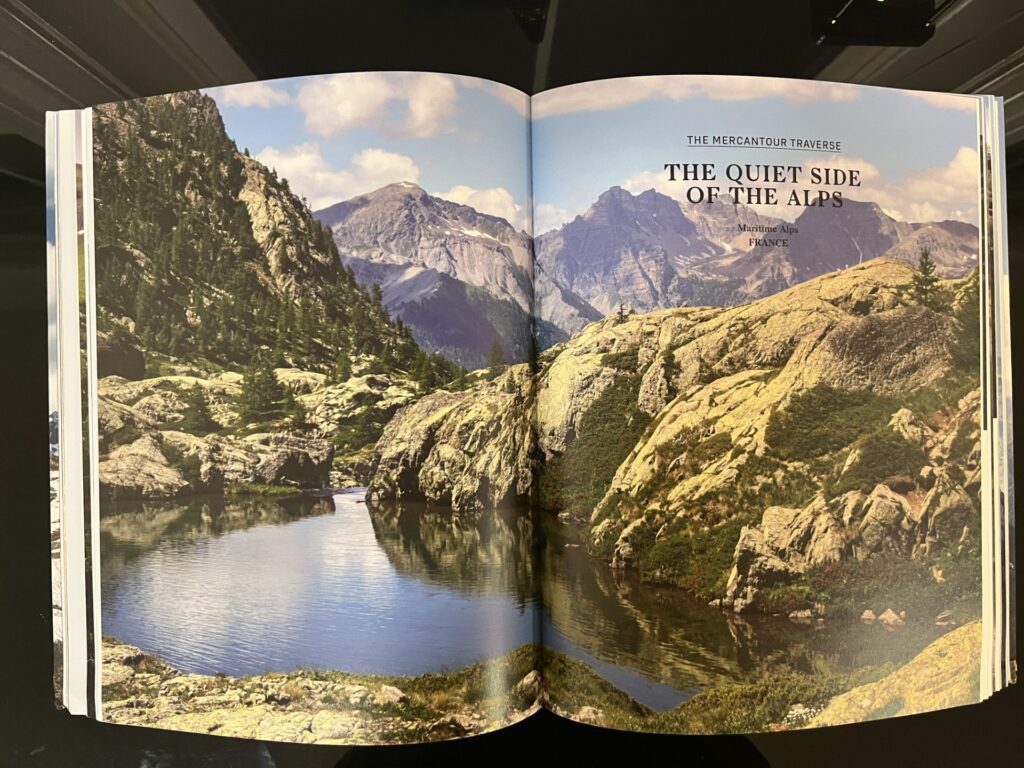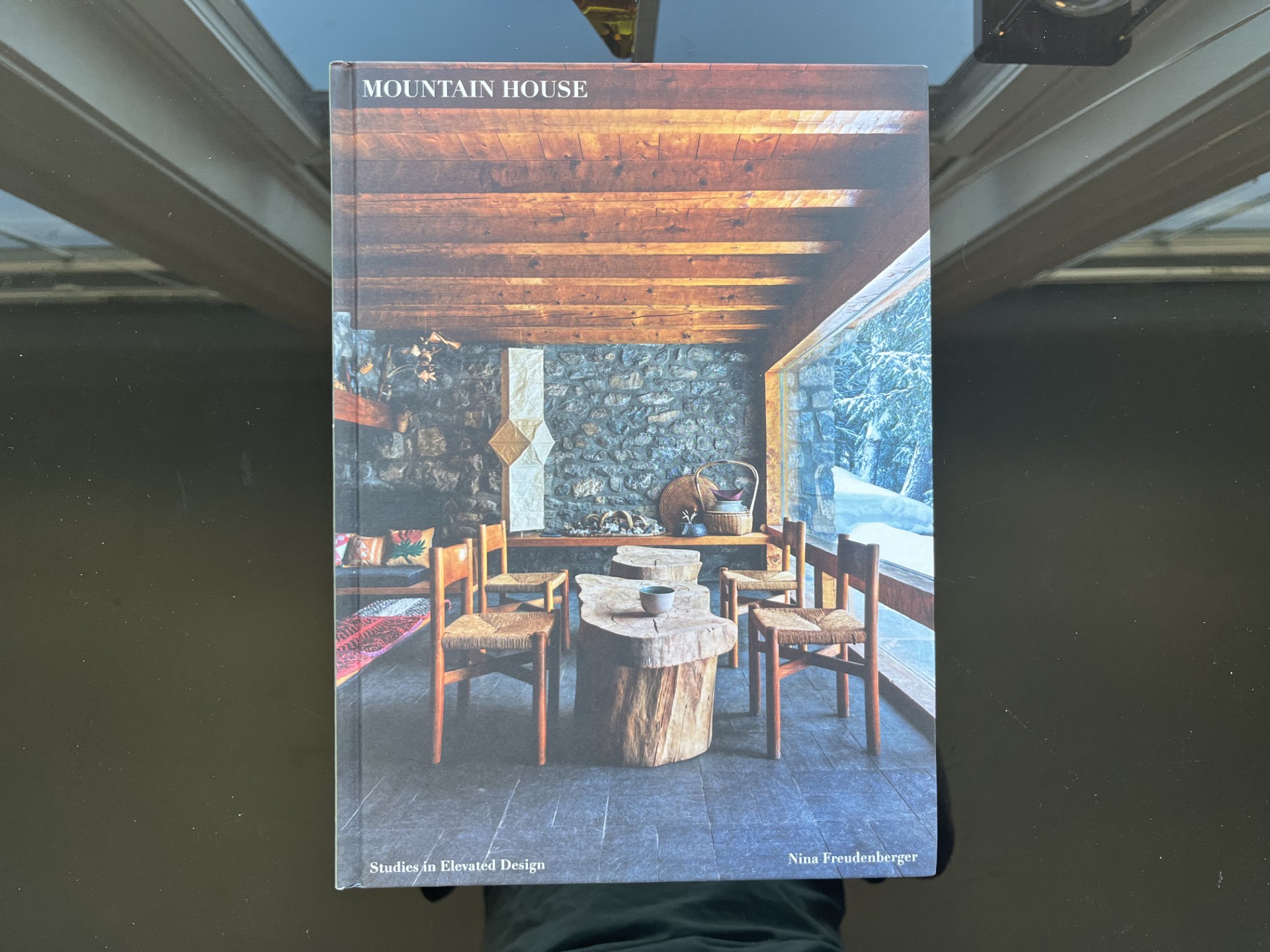“Mountain House: Studies in Elevated Design” by Nina Freudenberger invites readers to explore stunning homes nestled in breathtaking landscapes. This beautifully crafted coffee table book showcases over twenty unique mountain houses from various parts of the world. It challenges traditional ideas of what a mountain house can be, blending modern aesthetics with the serene beauty of nature.
Each featured home tells its own story, celebrated through striking photography that captures both design and environment. From cozy cabins in California to elegant farms in Switzerland, the diversity of these homes is sure to inspire. Readers will not only appreciate the visual journey but also gain insight into innovative design ideas that can transform any living space.

Freudenberger’s work is perfect for anyone passionate about architecture, interior design, or simply dreaming of their ideal getaway. This book serves as a reminder of the harmony that can exist between a home and its natural surroundings. With its rich visuals and thought-provoking concepts, it’s a must-read for those seeking inspiration in elevated design.
Exploring the Essence of Elevated Design
Elevated design captures the connection between architecture and nature. It emphasizes harmony, innovative ideas, and sustainable practices. These principles create spaces that are both beautiful and functional, enhancing the experience of living in mountainous settings.
Harmony with Nature
Mountain houses embrace their surroundings by integrating natural elements. Designers often use materials like stone and wood to blend architecture into the landscape. These choices create a seamless transition between indoor and outdoor spaces.
Large windows are common, allowing natural light to flood in and providing stunning views of mountain ranges. This design principle not only enhances aesthetics but also fosters a sense of tranquility. Nature becomes an integral part of daily life, promoting a lifestyle that appreciates its beauty.
Architectural Innovation
Architectural innovation is key to the appeal of mountain houses. Designers are challenged to think outside traditional box-shaped structures. Unique shapes and layouts are often used to take advantage of the mountainous terrain.
For instance, some homes have multi-level designs that follow the contours of the land. Others utilize cantilevers to create dramatic overhangs, adding visual interest. These innovative design choices make each house a work of art.
Sustainability in Construction
Sustainable practices play a vital role in modern mountain house design. Builders focus on using eco-friendly materials to lessen environmental impact. This includes local wood and recycled materials for construction.
Energy-efficient systems are also implemented, such as solar panels and high-quality insulation. These features not only reduce energy costs but also promote a healthier living environment. As sustainable building becomes more common, mountain homes reflect a commitment to preserving nature for future generations.
Spotlight on Notable Mountain Houses

Mountain houses come in various styles, each showcasing unique designs and magnificent views. From historic retreats to modern marvels, these homes offer different experiences of alpine living.
Historic Mountain Retreats
Historic mountain retreats transport visitors to a time when architecture blended with stunning landscapes. These homes often showcase traditional craftsmanship and local materials.
An exemplary retreat is the Hangar House in Aspen, Colorado. Built in the 19th century, it features stone walls and wooden beams, giving it a cozy, rustic charm.
Another notable house is the Mountain Lodge in the Catskills. Established in the early 1900s, this lodge uses large windows to capture natural light and views of the surrounding forests. Its wraparound porches are perfect for enjoying quiet mornings amid the trees.
Contemporary Alpine Living Spaces
Contemporary mountain houses are defined by sleek designs and innovative building techniques. They often incorporate large glass panels for unobstructed views of the landscape.
A standout example is the Glass House in Jackson Hole, Wyoming. This modern design integrates natural surroundings, making it feel as if it is part of the landscape. It’s known for its energy efficiency and minimalist approach.
In addition, the Alpine Villa in Zermatt, Switzerland, emphasizes open spaces and luxury. With its stunning views of the Matterhorn, the villa perfectly balances modern living with traditional elements, providing residents a warm atmosphere amidst sleek decor.
Award-Winning High-Altitude Homes
Award-winning mountain homes highlight design excellence and outstanding architecture. These homes often receive recognition for their innovative features and harmony with nature.
The Pinnacle Retreat in Telluride, Colorado, is an award-winning example, known for its impressive cantilevered design. This unique structure allows for breathtaking mountain views while maintaining a small footprint.
Another notable home is the Eagle’s Nest in Park City, Utah, which won several awards for its sustainable design. It uses recycled materials and incorporates solar panels, making it environmentally friendly and stylish. Its design maximizes light and space, creating a welcoming haven in the mountains.
The Designers Behind the Dreams
The creativity and skill of the designers featured in “Mountain House: Studies in Elevated Design” bring each home to life. Their expertise ranges from architecture to interior design, blending with the natural surroundings to create stunning retreats. Here are some important areas of their work.
Visionary Architects
The architects showcased in this book think outside the box. They design homes that are not only beautiful but also functional. Each architect has a unique approach, using materials that blend with the environment.
For instance, some structures incorporate large windows to optimize natural light and views. Others may use local stones and woods reflecting the regional landscape. This thoughtful design allows these homes to coexist with their surroundings, making the most of their scenic locations.
Innovative Interior Designers
Interior designers contribute significantly to the charm of mountain houses. They choose colors, textures, and furnishings that enhance the natural beauty of each space. These designers often mix contemporary styles with traditional elements, creating a cozy yet sophisticated atmosphere.
Landscape Architects and the Natural Canvas
Landscape architects are vital in ensuring that the homes integrate seamlessly with nature. Their designs focus on creating outdoor spaces that invite exploration and relaxation. By using native plants and natural materials, they enhance the beauty of the surroundings.
They also consider how paths, patios, and gardens flow with the architecture. A well-designed landscape can make outdoor areas functional for gatherings or quiet retreats. This connection to nature is a key theme in the designs found in “Mountain House: Studies in Elevated Design.”
